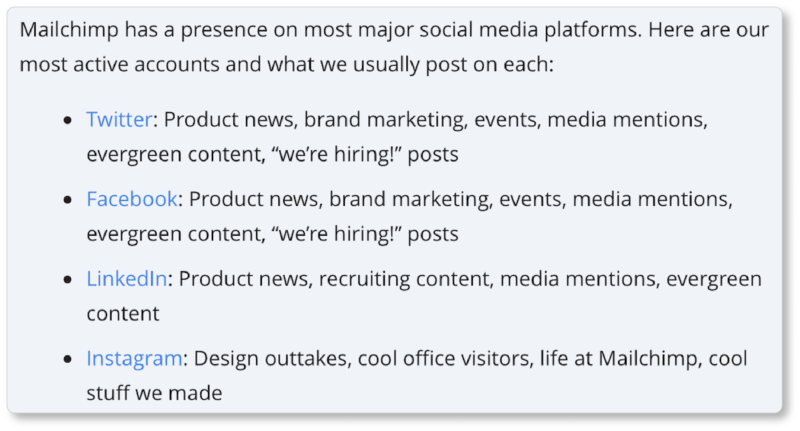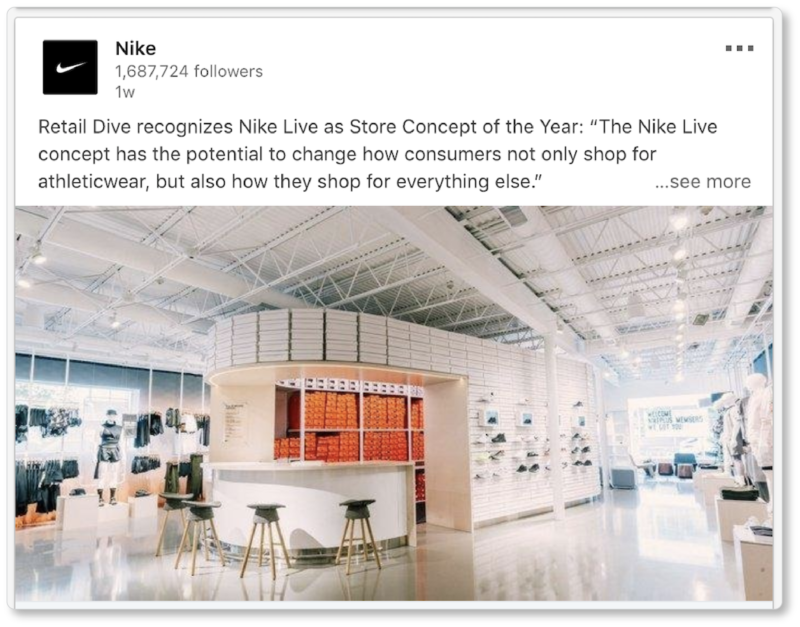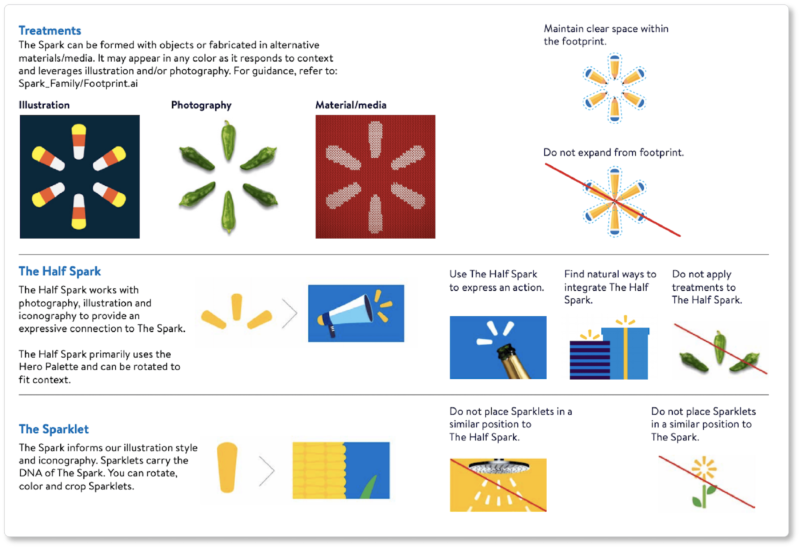- HOME
- Marketing
- Developing a Powerful Brand Positioning Strategy
- Implementing Your Brand Positioning Strategy
Implementing Your Brand Positioning Strategy
- 10 Mins Read
- Posted on December 1, 2018
- Last Updated on October 8, 2024
- By Lauren
Earlier in this content, we offered a list of questions to help you get to the heart of your brand positioning statement. They were:
- Where do I think my business is today?
- Where does my target market think my business is today?
- Are the answers to these two questions aligned?
- Where are my competitors?
- Where do I want to be in relation to my competitors… and can I credibly get there?
- How do I differentiate myself to get to where I want to be?
- How do I communicate that difference to my target market as a series of cohesive, branded messages?
At this point, nearly all the pieces are in place. Now comes the most interesting (and possibly the most difficult) part, which concerns that last question: How to turn your position into a larger communicative strategy. The collection of positioning documents you’ve crafted will inform… well, everything. Your web copy, marketing and advertising materials, email campaigns, packaging, storefront design, logo, signage, product innovation, and customer service are all opportunities to reinforce the claims and promises you’ve made about your business. A strong brand—which is what you want to be—lives and breathes its positioning in everything it does.
Of course, after all that intellectual labor, the last thing you want is a chaotic, un-strategized implementation. The most meaningful brand position you can possibly craft on paper will only have a beneficial impact on your business if it’s implemented with deliberation, thought, and care. This will ultimately mean ensuring the position you’ve claimed is “articulated” to your target market as thoroughly and flawlessly as possible in every facet of your business.
Of course, it’s best to ask these questions before the big brand rollout. Below are our recommendations for how to go about this. After all, starting off on the right foot will make you all the more likely to achieve long-term sustainability.
Start with Internal Implementation
While branding might look like a consumer-facing imperative, your team has to live it first. So prioritize internal communication. Implement in a top-down fashion: Socialize the positioning with department heads or managers, who can socialize it with their teams… and we mean every team; not just marketing communications. Give managers the opportunity to write down how they think the positioning should be executed in their department’s tasks and responsibilities. (They know their procedures and resources most intimately, after all). You might even consider appointing someone in the company as “brand manager.” This person will ensure there’s clarity about your positioning in the company culture, and that the company’s values and point of differentiation saturate the points of consumer contact.
“Socializing” means more than slapping posters with your list of company values on department walls. Develop internal materials that describe each team’s role in fulfilling your brand promise. Remember, employees can’t commit to your brand purpose with conviction until they fully understand both it and the role they have to play in bringing it to life. What does your brand position mean for their day-to-day activities? What’s the bigger picture they’re helping paint with each brand-aligned action they take?
What’s more, get Human Resources involved in your socialization strategy. Work with your head of HR to develop brand-specific key performance indicators (KPIs) that will influence employee behavior. HR’s recruitment efforts and onboarding procedures should set expectations about “on brand” behaviors such as how to inhabit brand values. Your HR department should ensure the brand’s position is instilled into new employees (ideally in an engaging, inspiring way) from the beginning.
One strategy to consider is showcasing best practices. Celebrate the employees who demonstrate your brand values, embody your mission, or go above-and-beyond in service of seeing your company’s vision through. Whether it’s on a whiteboard in your office lobby, on a page of your company website, or in person at your annual holiday party, honor the employees who are bringing your brand to life—and incentivize the others in doing so. Gifting your employees branded items such as hoodies, mugs, and laptop cases is an additional boost to internal brand loyalty.
Some employees might even become ambassadors for your brand. Platforms such as GaggleAMP and Everyone Social turn teams into brand advocates while ensuring that your messaging remains consistent across the board—by providing them with curated content and ways to engage. It’s one way to leverage employees’ affection for your brand in service of your marketing strategy.
Map Consumer Touchpoints
A touchpoint is any encounter consumers have with your business—from information exchanges, to services rendered, to monetary transactions. It also includes “encounters” that are out of your control: word of mouth, product reviews, or observing others using your product. Naturally, every time a consumer “touches” your brand, you want them to have a positive—and consistent—experience.
Some of the touchpoints you can control include:
- your website (both desktop and mobile—including purchasing processes, FAQs, website visuals, live chat, etc.)
- interactions with your employees (sales team, floor staff during the purchase experience, customer service and support, etc.)
- interactions with your product
- product information (including product manuals or online videos describing how to use the product)
- product packaging
- physical visits to your brick-and-mortar store (ease of navigation, aesthetic experience, etc.)
- your social media feeds
- your emails (transactional emails, marketing campaigns, etc.)
- your marketing materials (catalogs, brochures, business cards, etc.)
- your promotions
- public events and community involvement
Start by making a list of all touchpoints. (Get as many people as possible together for this process.) Once your list is complete, select the 5 most important touchpoints to focus on first. Remember, band implementation is a long and patient practice; you’ll get to the others over time. If you’re not sure which touchpoints to prioritize, a bit of market research wouldn’t hurt. This may be as simple as reaching out to some of your newest and some of your most loyal customers and asking what their “moments of truth” have been in their journeys with you thus far.
For each of these touchpoints, you’ll map out your customers’ needs, the expectations that your positioning statement sets, and the reality of customer experiences in light of your statement at that particular touchpoint. How do the vast majority of prospects or customers experience your brand in that moment? What can you do to align that experience even more closely with your brand promise? Get your best ideas down on paper. It’s never a bad idea to have a guide that translates your positioning into concrete characteristics and examples for any given moment of contact.
Alongside touchpoints, consider how your brand position holds up in light of the four components of the marketing mix (product, price, place, and promotion). You’ve spent a lot of time with the language of your positioning statement at this point, and you have a strong sense of what its wording communicates to consumers. How is each of these four areas of the mix an avenue for delivering the expectations you’ve raised in your positioning?
Is your product or service delivering on everything your positioning claims it does? Is your price reflective of the claims you’ve made about your offering? Does your distribution strategy (“place“) reflect the availability, convenience, or coverage you’ve promised your target market? How are you translating your position into communication (“promotion“) through the appropriate channels with your prospects?
Establish your Brand Voice
Okay; you’ve probably been “determining” this—at least unintentionally—with each branding statement you’ve crafted. But it’s worth taking the time now to look these statements over and ensure they’re consistent… and then confirm what your brand’s voice will be from here on out.
To be clear, by “voice” we mean the character and personality of your brand as it comes across through your choices in language and syntax. It may sound more like a literary term than a business term; and in fact, it may be useful to think of it that way. After all, a literary voice is the individual style that narrators use to tell their story… and a “story” is what your business is ultimately telling. It’s what all your communications, when combined, will add up to.
Like a character in a novel, you want your brand voice to be consistent, or your target market (“readers”) will become suspicious. Some examples of brand voice are: professional, authoritative, technical, cordial, reserved, conversational, familiar, chummy, rebellious, promotional, playful, funny… or any combination of these (and more). Choose a voice that’s authentic to your company; otherwise your messaging will come across as stiff and insincere. There’s room for every kind of voice in an industry, so choose what comes naturally to you. (Of course, also choose a voice that’s aligned with how your customer persona speaks.)
Your brand voice will ultimately inform your brand personality. We don’t have to remind you that people identify and connect with people; so thinking about your company as a character with human traits can go a long way toward winning brand loyalty (“friendship”). Personify your brand. Is it humble? Quirky? Mysterious? What does it like to do in its spare time? How would it act on a first date? If it was stranded on a desert island, what three things would it bring with it? How does it speak to its kids? Its lover? Its friends?
That last set of questions leads us to an important point: There’s a difference between a brand’s voice and its tone. Your voice will remain consistent for as long as you’re in business. You’ll adjust your tone, on the other hand, based on 1) which persona you’re speaking to, and 2) the content of your message. (No matter how “funny” your company voice is, you probably won’t make a joke out of a confused shipment order that couldn’t be rectified in time for the holidays.)
Attend to Your Website
What better place to practice and reinforce your voice, your value, and your brand position than on your company website—that virtual hub that lets you introduce yourself to your target market without interruption, and offer them your promises, proof points, and persuasive multi-media all in one place? Your About Us page should narrate your company story in a way that resonates with your mission, vision, and values statements. Everything from your homepage to your FAQ to the copy on your product pages should demonstrate a consistent company personality and point invariably to the same customer benefits. And your blog should consistently deliver content on the subject you’ve claimed to prioritize in your positioning.
Consider Starbucks. The coffee company prioritizes community and humanity in its day-to-day operations, with a mission to “creat[e] a culture of warmth and belonging, where everyone is welcome.” Their blog, 1912 Pike, reinforces the company mission by frequently highlighting the very people that make the company tick. Everyone is, indeed, “welcome”—and honored—here:
 Take a tip from Starbucks. As you curate every page of your website, ensure the content supports your brand position as thoroughly as possible.
Take a tip from Starbucks. As you curate every page of your website, ensure the content supports your brand position as thoroughly as possible.
Socialize
Your website isn’t your only digital presence. You’ll be building brand awareness online through Facebook, Instagram, Twitter, LinkedIn, Google+, Pinterest, and/or other social platforms specific to your industry. Naturally, you’ll choose the platforms that your target market is on—but remember that not all social media sites are equal, and each will require a unique approach. Each platform fosters a slightly different demographic, for example: There’s little sense in having a Snapchat account if your target market is over 30. So choose wisely, and don’t spread yourself too thin. Better to shine on a single platform than to have a lackluster presence on several.
Of course, you’ll strive to maintain brand consistency across all channels you’re active on. That includes your logo, tagline, fonts, and color scheme. But it also means consistently creating content that reinforces your brand story and values across platforms. (That doesn’t mean posting the same content across platforms!) Here’s how MailChimp describes their approach in their Content Style Guide:

Or take Nike. While they do cross-promote a lot of their social content, they also respect platform diversity. Their Facebook and Instagram feeds offer inspiring stories of real-life heroes who “dream big” and “dream crazy”; their LinkedIn feed is where they share updates and details about the company’s successes:


Same values; same brand story; same mission. But different facets of each on different platforms.
Create a Style Guide
We’ve been harping on consistency, and a style guide will ensure that you deliver it. This will be the ultimate resource for your employees to turn to whenever they have a question about “fair and acceptable use”—call them best practices—for branding. Download the guide to a shared folder on your document management platform so teams have access to it at all times. (While we’re at it, you might also provide them with document templates and/or social sharing templates to simplify adherence to standards.) Include the following in your guide:
- your business name and its story
- your mission, vision, and values statements
- logo designs (including placement and size guidelines to ensure consistent use across marketing materials)
- fonts and typography (including custom fonts and instructions about which fonts to use in which channels)
- color palette details (including when it’s acceptable to use different shades or color variations)
- a definition of your brand’s voice (including specifications for tone, language restrictions, and keywords that should regularly appear in your communications)
- image styles and standards, including size and resolution (colors, saturation levels, a list of feelings your images should evoke, etc)
- elements to avoid/examples of poor brand use
Walmart’s Brand Guide is an exceptional example of a comprehensive (and delightful) style guide. Here’s their section on logo treatments:

Other great examples are at Barnes & Noble, Cisco, and Love to Ride. Those last two should serve to remind you that style guides aren’t just for enterprise businesses. Brand consistency is imperative no matter how big your business is.
Monitor and Evaluate Your Positioning
Brand implementation is not a one-time affair: It’s an ongoing process you’ll be “rolling out” and monitoring for as long as your doors (real or virtual) are open for business. We offered strategies for monitoring and measuring your brand perception earlier in this content; and we recommend you return to them regularly to ensure that your market’s perception of your brand aligns with the position you hope to occupy in your industry.
Use the most direct lines possible for the most genuine feedback. While strategies such as social listening and website surveys are extremely valuable (use them!), there’s really nothing better than one-on-one conversations with your customers. Have them wherever and whenever you can.